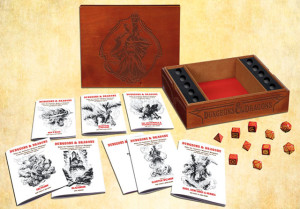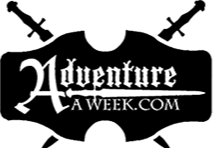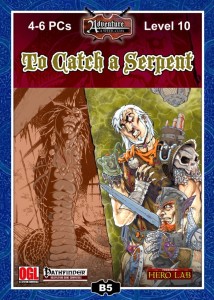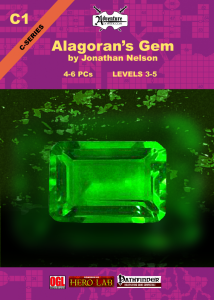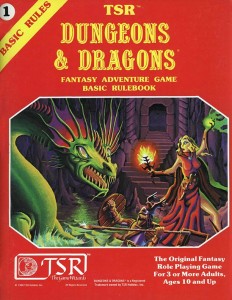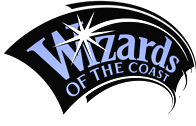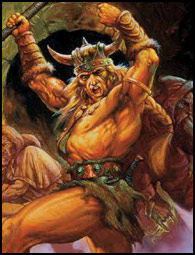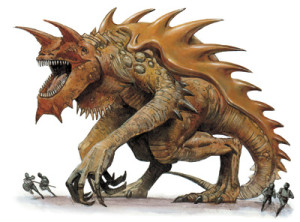 I have never, as a player, been caught in a game with a Tarrasque. Have you? This creature is one of the most iconic creatures in all the bestiary books I have ever read. We have seen at least five different official versions over time and there is always one thing that can be said about the Tarrasque, and that is you just can’t keep it down. Ever. Period. Don’t mess with it because it will kill you.
I have never, as a player, been caught in a game with a Tarrasque. Have you? This creature is one of the most iconic creatures in all the bestiary books I have ever read. We have seen at least five different official versions over time and there is always one thing that can be said about the Tarrasque, and that is you just can’t keep it down. Ever. Period. Don’t mess with it because it will kill you.
The Tarrasque has always been an open topic of conversation at the D&D and Pathfinder tables. It is said if a GM ever tires of his current campaign the certain way to end it is to introduce a Tarrasque. But what are the origins of such a beast. When it got placed in the Pathfinder Bestiary I realized that the adorable little critter (not) was’t the Intellectual Property (IP) of Wizards of the Coast (WotC) as I had previously believed. I became curious as to the origins of such an iconic creature in the game so I went and looked at books (yes, the paper kind) and the internet to track some information down. Was there a high level adventure hiding somewhere that I could take advantage of debasing the myth that the Tarrasque was a simple rampaging creature full of wrath and destruction?
The legend of St. Martha is actually the source of the Tarrasque story and it stems from a book of legends called the “Golden Legend” which was penned in the mid 1200’s although more was added through the years. Over a thousand manuscripts of this book has survived as it was exceptionally popular in its time. The source of the story comes from France where there was a dragon like creature known as the Taresque who lived in and around the Nerluc area in Provence, France. The creature was laying waste to a wide swathe of territory and nothing seemed to be able to stop it.
The Taresque of legend was not the colossal magical beast of the D&D books. In fact it was said to have six short bear legs, an ox-like body covered by a turtle shell, a scaly scorpion tail and the head of a lion. It was said to burn anything it touched which was the way it was ruining the land. It is unclear if this was before or after it had been attacked by knights and catapults though so it may have been peaceful before it. Regardless, anything they fought with could not defeat the creature.
Enter our heroine, St. Martha. Understanding the damage the creature was causing, she sought out the creature in the hope that her faith in God would protect her and change the Tarasque to a creature of God. On finding the creature St Martha placated the creature with hymns and readings from the Christian book. The creature joined with St Martha who took it to the city to show the people there that the creature was not a threat. As she approached with the creature the people of the city rose up and attacked the beast in fear. The Taresque did not fight back in any way and the city folk killed the creature with their hatred.
After the destruction of the creature St Martha preached to the masses and converted them to christianity. Ashamed at what they had done to the Taresque the newly converted followers of christianity renamed their town to Tarascon in honour of the creature.
There are obviously quite a few differences between the Tarrasque of D&D or Pathfinder and the Taresque of St. Martha’s Legend. But the tale does offer an interesting insight into perhaps the way it could be used in a game. The Taresque of legend appears to have had little overt intelligence but it was aware enough to make choices and this is reflected in the statistics of the Tarrasque as found on the Pathfinder Reference Document (PRD) here. Obviously the creature would listen to reason and therefore had a good Wisdom again reflected in statistics. It does appear in the legend that the creature itself was not an angry rampager in its infancy and it was likely the intervention of man attacking it that caused it to rampage, so it was likely a Neutral creature reacting to being attacked, again reflected in the statistics.
Where the Tarrasque of the game differs though is basically on every other aspect. It is a colossal creature which is not reflected by the statistics. It looks different to the legend representation, it regenerates (even if it has been disintegrated!) and no known method has been found to kill it! In the statistics it truly does seem that this creature is something a GM uses when they have had enough! The only time I have ever used one was in a what if scenario with a mate of mine. It was “What if a Tarrasque met a Hekatonkheires Titan (Bestiary 3). By the way, the Titan won just by stunning the Tarrasque, beating it down to below 0 HP and then banishing it to another dimension.
Using the St. Martha legend you could handle the Tarrasque a different way though. Perhaps even using the same story line where the monstrous beast is simply found and attacked out of fear as your high level party approach the area. The Tarrasque retaliates out of anger for being threatened and disturbed and the players need to find a way to get through to the creature instead of finding a way to destroy the beast. This creature does not need to be the death of the party, in fact it could be a great ally in a time of need if they take the time to solve the beasts issue and the issue those that attacked it have.
I always find it interesting to look at the history of creatures. Find their folklore or legend origins and you will likely find a seed for an adventure. I have never heard of anyone (seriously) using a Tarrasque in a game yet it reappears edition after edition as this gigantic monstrosity. It generates a lot of discussion at the table and while I am sure there is a lot of visits to the Tarrasque page to check its statistics there are very few games that have ever employed one. I am keen to hear in the comments from those that have used one in a serious way or for those of you that have ideas on how else you could introduce the Tarrasque to your game. Let me know, and until next week, keep rolling!
Mark Knights is 39 year old guy living in a small rural town called Elliott in Tasmania, Australia. I have been role playing since I was 11 years old playing the original versions of Dungeons and Dragons, MERP, Elric, Dragon Warriors and the like amongst other genre games. I played D&D 2nd Edition through the 90′s but I ran Earthdawn for my fantasy setting and loved it as a GM. When 3rd Edition came out for D&D I tried it but found it too heavy on rules. I ignored the 3.5 edition of DnD in favour of Earthdawn (big mistake) as I thought it was just a money spinner. When 4th Edition DnD came on my players and I gave it a red hot go but hated what it had dumbed the game down to be. On a trip to Melbourne to buy some 4E stuff from a hobby store an old mate of mine pointed me at Pathfinder and in a Fantasy setting I have never looked back.




